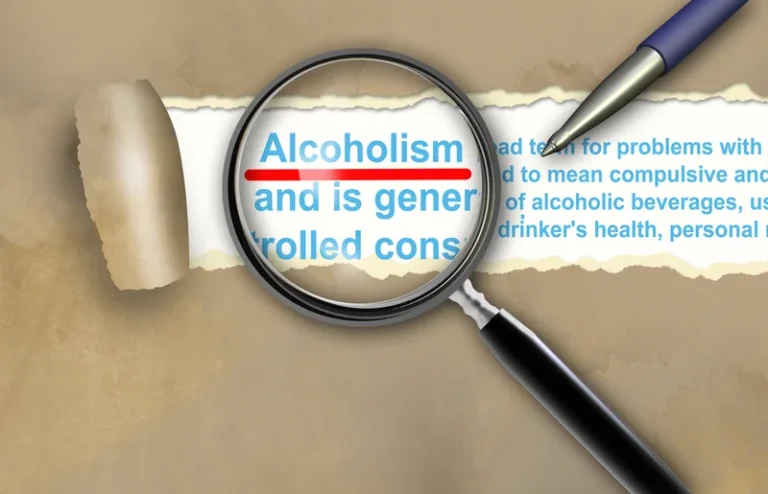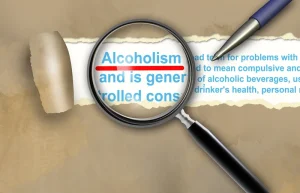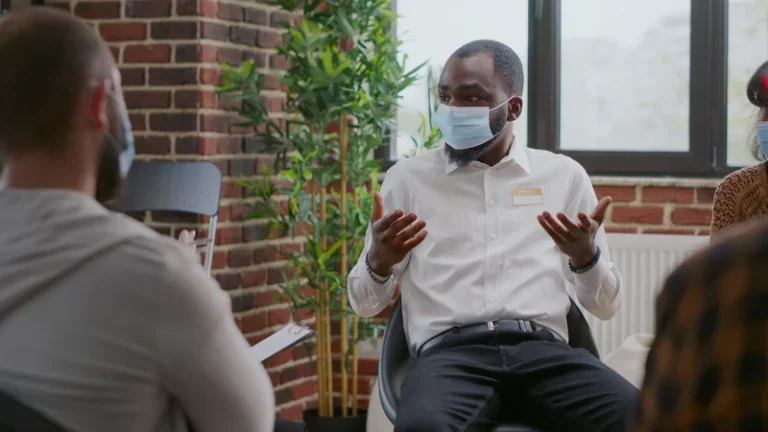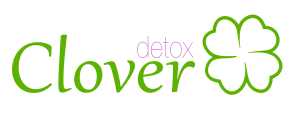Psychedelic therapy in the treatment of addiction: the past, present and future

The investigators suggested that the upregulation of 5-HT2A receptors in OCD patients may be a compensatory mechanism for a lack of serotonin in the feedback loop between the thalamus and OFC, the caudate nuclei, and the globus pallidus. It is known that serotonergic psychedelics cause rapid downregulation of 5-HT2A receptors, which might have an effect similar to SSRI treatment with respect to 5-HT2A receptors. It has been recognized for some time that psychedelics (i.e., 5-HT2A agonists) increase levels of cortical glutamate (Aghajanian and Marek, 1997, 1999b; Béïque et al., 2007; also see the earlier section on glutamate in this review). Vollenweider and Kometer (2010) suggested that indirect activation of glutamate networks by classic psychedelics may enhance neuroplasticity through stimulation of α-amino-3-hydroxy-5-methyl-4-isoxazolepropionic acid–type glutamate receptors and subsequent increase in the level of BDNF. Serum BDNF levels are abnormally low in depressed individuals and treatment with antidepressants is known to normalize BDNF levels (Sen marijuana addiction et al., 2008).
- As a writer, she focuses on mental health disparities and uses critical race theory as her preferred theoretical framework.
- The top of the peyote cactus, also referred to as the crown, consists of disk-shaped buttons that people cut from the roots and dry.
- Such work is important to understand possible drug–drug interactions and to ensure the safety of participants with OUD who are often maintained on these medications.
- Such an approach also enables for biomarker informed prognosis, ultimately to enable precision-based stratification of patients to specific treatments with the ultimate goal of enabling a personalized medicine approach that will ultimately improve patient outcomes.
Medical Conditions
Again, using mouse RSK2−/− fibroblasts, they ectopically are psychedelics addictive expressed WT RSK2, N-terminal kinase-dead RSK2 (K100A), or C-terminal kinase-dead RSK2 (K451A) constructs. They determined that RSK2−/− fibroblasts transfected with WT RSK2 and RSK2-K451A, but not with the RSK2-K100A mutant, expressed amounts of RSK2 similar to RSK2+/+ fibroblasts. RSK2−/− fibroblasts expressing WT RSK, but not kinase-dead RSK2 (K451A) had attenuated agonist-mediated 5-HT2A signaling levels comparable to RSK2+/+ fibroblasts, indicating that RSK2 kinase activity was required to regulate 5-HT2A receptor signaling. These data supported the conclusion that activated and purified RSK2 phosphorylates the 5-HT2A receptor in vitro. Shi et al. (2008) examined agonist-induced desensitization of 5-HT2A receptors in the rat hypothalamic paraventricular nucleus (PVN) with 1 mg/kg R-(−)-DOI.
How does xylazine make people feel?
To date, there has been no RCT evidence for Ibogaine, although efforts are now underway to restart this clinical development pipeline. This research was catalyzed in the middle of the 20th century with evidence coming from case studies, observational and naturalistic research, and more recently modern-era double-blind randomized controlled trials (RCTs). The last decade has seen an expansion into understanding further the mechanism of action of these compounds, using modern biomedical techniques spanning from preclinical molecular biology to in vivo human neuroimaging. This review aims to chart the current evidence for psychedelic therapy, including both classic and non-classic psychedelics, in the treatment of addiction and summarize the current state of knowledge on the mechanisms of action of these compounds. We will finish this review by highlighting several research avenues that could profitably be explored over the coming years to optimize the development of psychedelic therapy for this indication. Researchers are testing psilocybin’s potential to treat mental health disorders like substance use disorders, depression, anxiety, and obsessive-compulsive disorder.

How do people take morphine?
These substances affect serotonin, the brain chemical responsible for mood, sleep, and perception. When serotonin is disrupted, it’s like your brain’s “control center” is on a wild rollercoaster. Wide-scale medical interest in psychedelics first arose in the 1950s and ’60s, and the agents were found to be notably safe, non-addictive, and of potential value for treating a wide range of psychiatric disorders.
- One month after cessation of 0.16 mg/kg LSD treatment, rats also had significantly altered social behavior, with reduced sniffing, grooming, and following and markedly enhanced aggressive (boxing, kicking, wrestling) and exploratory (sniffing, rearing, hole poking) behaviors.
- Sipes and Geyer (1994) first reported that the selective 5-HT2A antagonist ketanserin blocked the disruptive effects of DOI-induced PPI.
- In vitro and ex vivo receptor binding studies, production of second messenger signals, use of receptor-specific antagonists, and even whole-animal imaging have given insight into the possible pharmacological and neurochemical effects of psychedelics.
- L-5-Hydroxytryptophan (5-HTP) produced the HTR in WT mice but gave a greatly attenuated response in β-arrestin-2 KO mice.
- Agonist or partial agonist activity at the serotonin 5-HT2A receptor was ultimately concluded to be a necessary pharmacology for psychedelic effects, but it may not be sufficient to explain all of the qualitative differences between different drugs.
Roles
At the time of peak of effects, high-dose psilocybin (but not the medium dose) impaired spatial span task performance as indexed by span length. The investigators indicate that the disturbed timing abilities for sensorimotor synchronization and duration reproduction observed could reflect impairments of short-term memory, attention, or decision-making mechanisms. Given the selective effect of psilocybin on longer-duration intervals in both the temporal reproduction and sensory synchronization tasks, it was suggested that the observed temporal disturbance is induced through interference with cognitive processes like attention and working memory.

Are Hallucinogens Addictive? The Truth About Their Impact on Your Brain
Consistent with the positive changes, high-dose experiences were also rated as producing significantly greater personal meaning, spiritual significance, and increased well-being or life satisfaction than the low-dose experiences, with these differences sustained at 6 months. Furthermore, the immediate postsession mystical experience score was linearly correlated with therapeutic efficacy. Griffiths (2015) concluded that a single moderate to high dose of psilocybin, if given under supportive conditions to carefully screened and prepared participants, produced substantial and enduring decreases in anxiety and depression in patients with a life-threatening cancer diagnosis. Although nonhuman primates might be the best animals to model the actions of psychedelics in humans, almost nothing has been published in the past decade using monkeys. Fantegrossi et al. (2004) reported on transient reinforcing effects of phenylisopropylamine and indoleamine psychedelics in rhesus monkeys. They investigated the capacity https://ecosoberhouse.com/ of several psychedelics to maintain self-administration in four rhesus monkeys with a history of MDMA self-administration.

How do people take khat?
In addition, they also noted that the increased H-reflex amplitude was positively correlated with serotonin immunoreactivity around the motoneurons involved in the reflex. DOI had previously been shown by Miller et al. (1996) to restore excitability of extensor motoneurons that is abolished after acute spinalization in the cat. In addition, no serotonergic innervation of the lumbar-sacral spinal cord remains after a CT (Lee et al., 2005), because completely transected animals showed no 5-HT immunoreactivity at the level of the rostral dorsolateral nucleus. More recently, Hasselbalch et al. (2008) used 18Faltanserin PET to assess cerebral 5-HT2A receptor density in 16 patients with mild cognitive impairment of the amnestic type, compared with 17 age and sex-matched controls.
Dangers & Side Effects of Abusing Psychedelics

Within the clinical environment, set and setting, as well as the overall care experienced, can be largely controlled (Rucker et al., 2018). Training and experience of the therapists (both during the dosing sessions and for the all-important integration sessions) is also essential (Tai et al., 2021). But today’s scientific-technological approaches have advanced considerably since the early research. For an example of current techniques applied to enable our understanding of how psychedelics produce their effects, please see Singleton et al. (2021). Most earlier shortcomings are being addressed in recent trials, that is, in randomised placebo double-blind studies (Carhart-Harris et al., 2021; Mitchell et al., 2021).
